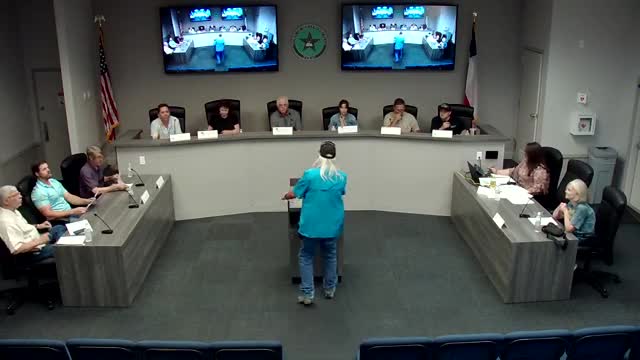Committee discusses CWD testing, incident response and forms subcommittee to draft public protocol
January 03, 2025 | Hollywood Park, Bexar County, Texas
This article was created by AI summarizing key points discussed. AI makes mistakes, so for full details and context, please refer to the video of the full meeting. Please report any errors so we can fix them. Report an error »

Committee members spent the meeting debating responsibilities and protocols for responding to injured or sick deer after a recent resident letter and several local incidents.
Randy, the committee’s deer manager, described the testing chain used for suspected chronic wasting disease cases: local samples are sent to Austin; if positive or for confirmatory testing, samples can be sent to Texas A&M and then to a national laboratory for confirmation. Randy told the committee, “the 10 samples we have sent in for the TTP were all non-detect,” and explained that Parks and Wildlife typically does not contact local staff unless a test returns positive.
Committee members discussed an incident raised by resident Kristen Hammond, who reported a sick deer in a front yard at a prior meeting. Members noted that an incident report for that case was missing from the packet; Doug Brown said the committee would prepare an incident report and include it in the next meeting’s package. Randy agreed to prepare a report of that instance for the next packet.
Several members stressed the need to clarify who residents should call when they find an injured or sick deer. The committee debated whether police, city public-works/staff (Kelly), or Randy should be primary contacts. Doug Brown and others urged that the police be listed first because they maintain 24-hour response capability; Randy said he has been responding as a courtesy but is not always available. Randy summarized Parks and Wildlife guidance to the committee: “The discussion we had... is that if the deer is able to get up and move, unless it’s a traumatic non-survivable injury, it’s left alone,” and that because of CWD, “if we touch a deer, it’s put down” for testing protocols.
The committee appointed a small subcommittee to draft a short, public-facing protocol that lists whom to call and in what order. Jason Dennis volunteered to lead the subcommittee; members asked that Texas Parks and Wildlife be invited to the next meeting to answer questions and provide phone numbers and guidelines. Doug Brown said he would send an email response to Kristen Hammond via city staff to explain the committee’s plan of action.
Residents at the meeting, including Betsy Landry (Meadowbrook), urged public education so citizens understand the changed rules and limitations because of CWD and the role of volunteer responders. The committee agreed the protocol should be concise and distributed through local channels (social media and the city) to reduce confusion about who to contact in future incidents.
Randy, the committee’s deer manager, described the testing chain used for suspected chronic wasting disease cases: local samples are sent to Austin; if positive or for confirmatory testing, samples can be sent to Texas A&M and then to a national laboratory for confirmation. Randy told the committee, “the 10 samples we have sent in for the TTP were all non-detect,” and explained that Parks and Wildlife typically does not contact local staff unless a test returns positive.
Committee members discussed an incident raised by resident Kristen Hammond, who reported a sick deer in a front yard at a prior meeting. Members noted that an incident report for that case was missing from the packet; Doug Brown said the committee would prepare an incident report and include it in the next meeting’s package. Randy agreed to prepare a report of that instance for the next packet.
Several members stressed the need to clarify who residents should call when they find an injured or sick deer. The committee debated whether police, city public-works/staff (Kelly), or Randy should be primary contacts. Doug Brown and others urged that the police be listed first because they maintain 24-hour response capability; Randy said he has been responding as a courtesy but is not always available. Randy summarized Parks and Wildlife guidance to the committee: “The discussion we had... is that if the deer is able to get up and move, unless it’s a traumatic non-survivable injury, it’s left alone,” and that because of CWD, “if we touch a deer, it’s put down” for testing protocols.
The committee appointed a small subcommittee to draft a short, public-facing protocol that lists whom to call and in what order. Jason Dennis volunteered to lead the subcommittee; members asked that Texas Parks and Wildlife be invited to the next meeting to answer questions and provide phone numbers and guidelines. Doug Brown said he would send an email response to Kristen Hammond via city staff to explain the committee’s plan of action.
Residents at the meeting, including Betsy Landry (Meadowbrook), urged public education so citizens understand the changed rules and limitations because of CWD and the role of volunteer responders. The committee agreed the protocol should be concise and distributed through local channels (social media and the city) to reduce confusion about who to contact in future incidents.
View full meeting
This article is based on a recent meeting—watch the full video and explore the complete transcript for deeper insights into the discussion.
View full meeting
